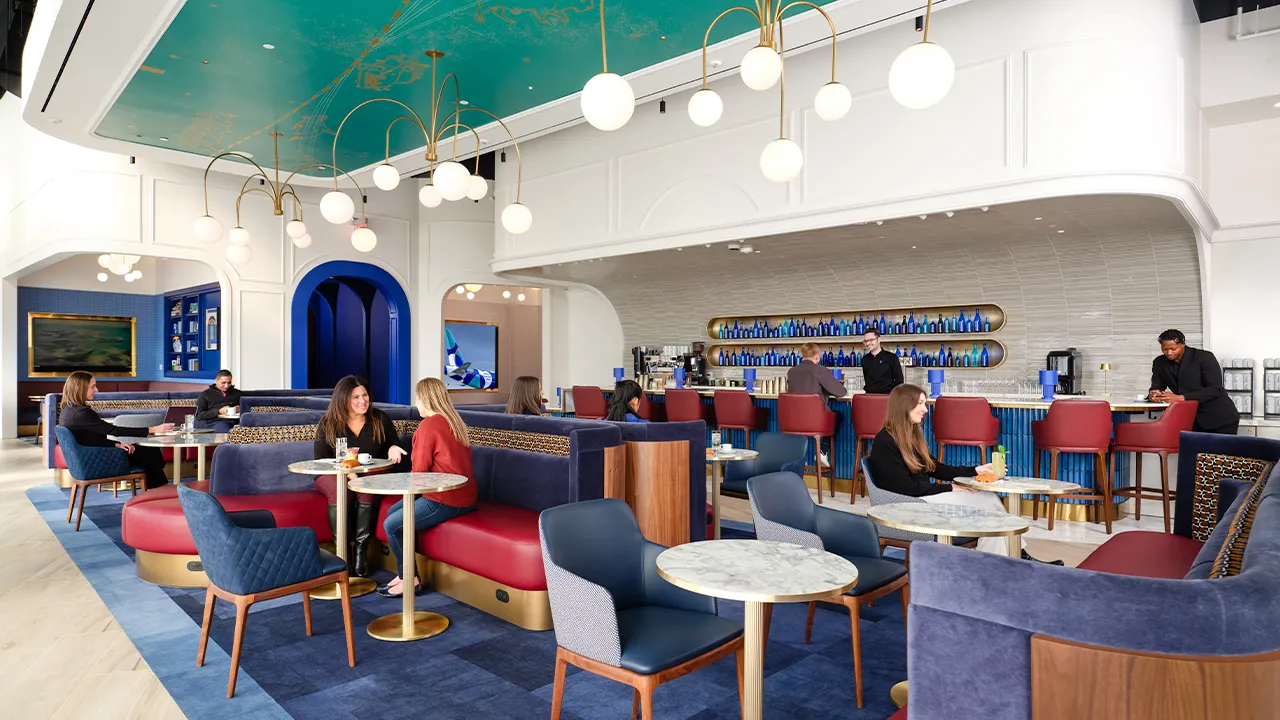Business
JetBlue opens first airport lounge BlueHouse at JFK Terminal 5 in New York

Check out what’s clicking on FoxBusiness.com.
JetBlue is unveiling its first-ever airport lounge at New York’s John F. Kennedy International Airport in a major push to expand its premium services, the airline announced Thursday.
The lounge, called BlueHouse, will open Dec. 18 at 5 a.m. in Terminal 5. A second location is scheduled to open in 2026 at Boston Logan International Airport’s Terminal C, the air carrier said.
Designed to “feel like an extension of home” and inspired by New York City’s energy and character, BlueHouse will span two floors and 9,000 square feet, JetBlue said. The space is expected to feature an NYC apartment–style aesthetic with art deco elements and “playful nods to JetBlue’s history.”
“We wanted customers to feel like they’re stepping into a warm and stylish New York City apartment filled with character, where layers of JetBlue history and New York iconography can be discovered with every visit,” Stephanie Evans Greene, senior vice president of marketing and brand, said.
JETBLUE TO CUT FLIGHTS AS CARRIER SAYS ‘UNLIKELY’ TO BREAK EVEN IN 2025 DUE TO WEAKER TRAVEL DEMAND

A dining and bar area at JetBlue’s BlueHouse airport lounge. (JetBlue / Fox News)
Visitors can expect high-speed Wi-Fi, ample power outlets, a game room, open seating and quiet zones tailored for travelers who want to socialize, work or relax before a flight.
For entertainment, the lounge will reportedly include a game room stocked with JetBlue-branded cards, chess, checkers and children’s toys. Guests can also take home photos from a custom photo booth, the company added.
UNITED AIRLINES, JETBLUE PARTNERSHIP GETS TRUMP ADMIN CLEARANCE TO FLY

JetBlue’s BlueHouse airport lounge at New York’s John F. Kennedy International Airport. (JetBlue / Fox News)
Access will be complimentary for Mosaic 4 members, JetBlue Premier Card members and transatlantic Mint customers, the company said. Mosaic 4 and Premier members may bring one complimentary guest, and each tier can add additional guests for $39 each.
| Ticker | Security | Last | Change | Change % |
|---|---|---|---|---|
| JBLU | JETBLUE AIRWAYS CORP. | 4.89 | -0.14 | -2.78% |
JetBlue added that limited-access passes will be available for purchase starting February 2026 for Mosaic 1-3 members, JetBlue Plus and Business Cardmembers, non-transatlantic Mint customers and Annual BlueHouse members.

BlueHouse will span two stories and 9,000 square feet. (JetBlue / Fox News)
CLICK HERE TO DOWNLOAD THE FOX NEWS APP
JetBlue said BlueHouse is part of its broader JetForward strategy, which aims to deliver more premium hospitality for its customers.
“As our first lounge, it represents an exciting milestone in our JetForward journey as we focus on bringing affordable, premium experiences from the aircraft to the airport,” JetBlue President Marty St. George said.










